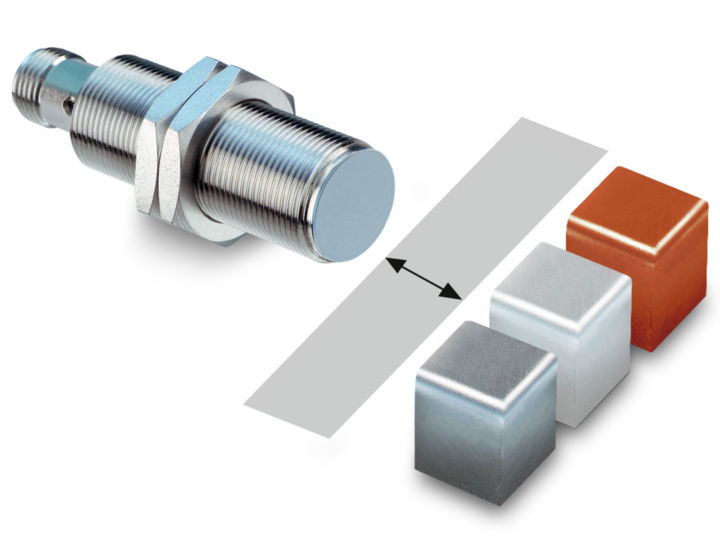Video "Factor 1"
Inductive Factor 1 sensors offer the great benefit of maintaining the same sensing distance towards all metals. This uniform distance offers outstanding flexibility in system conception and sensor installation. However, the benefits of Baumer sensors go even further: They are the fastest in their class in relation to sensing distance and have exceptional sensing latitude.
Your benefits
- Flexibility in machine design
- Two to four times larger measuring range on aluminum and ferrous metals compared to an inductive distance-measuring standard sensor
- Direct measurement on workpiece possible even with changing materials
- Negligible production lot variations enable larger production tolerances
- Easy installation
- 1-point teach (resetting) replaces mechanical fine adjustment using spacers
- Sensor replacement without controller adjustment thanks to factory calibration
- Teachable measuring ranges enable automatic format changes
- Low-cost controller integration
- Easy evaluation thanks to linear characteristic output curve
- No individual correction polynomials required for calculation (factory calibration)
- High process quality
- Negligible production lot variations enable more exact positioning
- Low temperature drift and excellent EMC properties
Technology
Comparison of factor 1 sensors and standard sensors

With standard sensors, the measuring range for non-ferromagnetic metals is reduced by up to 70%. Factor 1 sensors feature a micro-controller as well as a temperature-stabilized reference circuit which compensates this undesirable effect. As a result, factor 1-sensors do not have a material-dependent reduction factor and thus offer the same maximum measuring range for all metals. They are therefore particularly suitable for measurements on non-ferromagnetic metals such as aluminum or ferrous metals.
Thanks to the integrated micro-controller, they offer the same advantages as linearized AlphaProx sensors: negligible production lot variations, low temperature drift, linearized characteristic curve as well as different teach options for adapting the measuring range to the specific application or eliminating mechanical installation tolerances.
Downloads
Brochures / Catalogs
-
Flyer – AlphaProx inductive sensors

